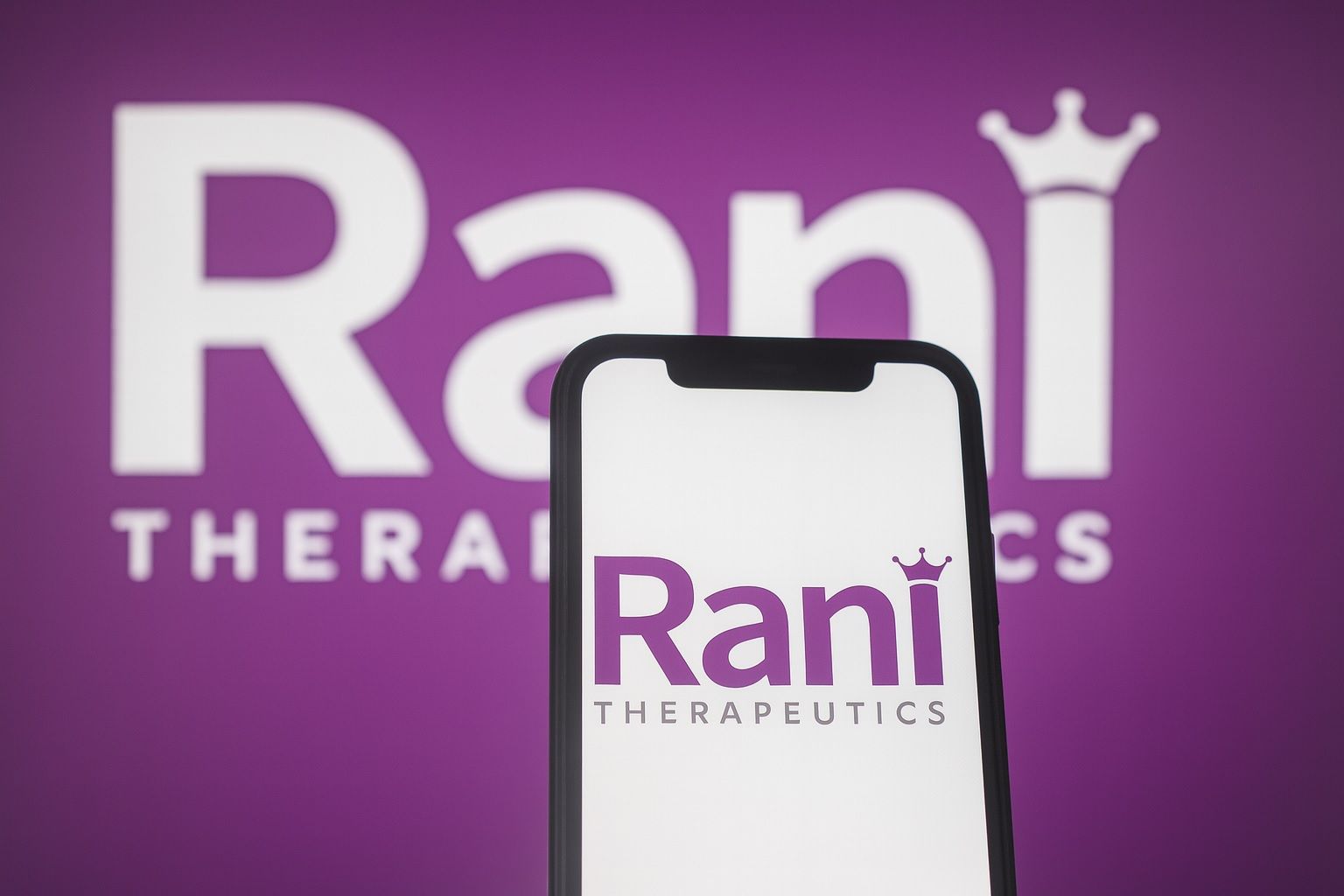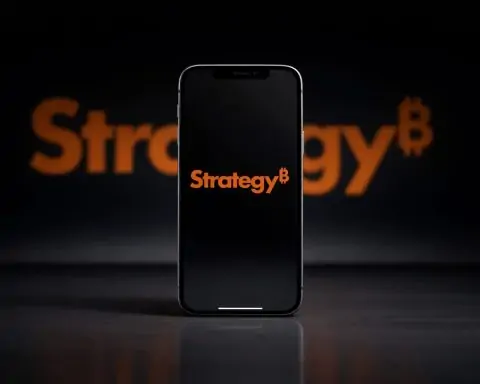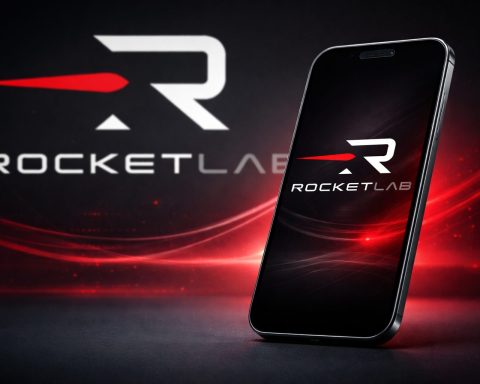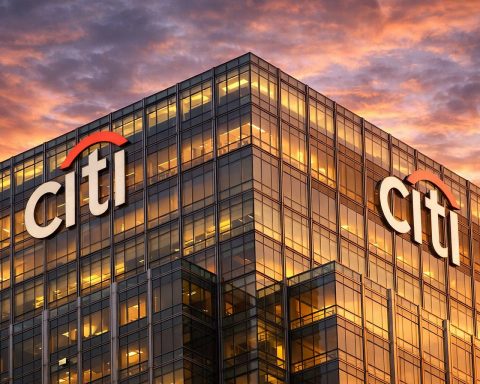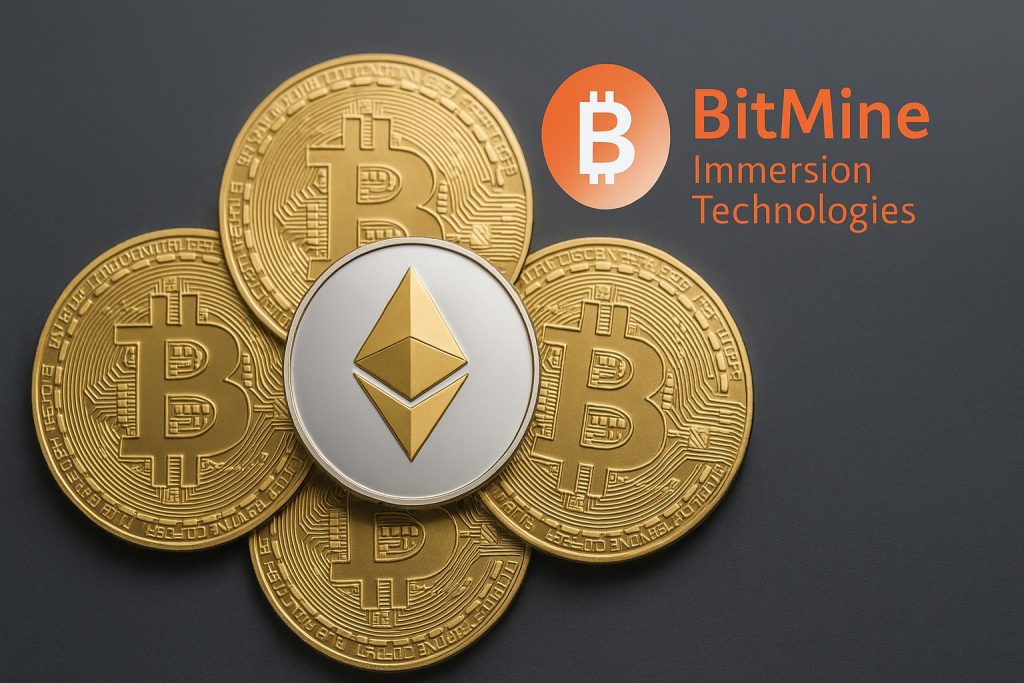- Stock Surges: Rani Therapeutics Holdings, Inc. (NASDAQ:RANI) nearly tripled in price on October 17, 2025 after announcing major partnership news. Shares exploded from about $0.47 to an intraday high around $1.37 (almost +190%) on extremely heavy volume [1], catapulting the beaten-down biotech out of penny-stock territory.
- $1B+ Partnership: The clinical-stage company inked a collaboration with Japan’s Chugai Pharmaceutical (majority-owned by Roche) worth up to $1.085 billion in potential value [2] [3]. Rani will receive $10 million upfront and up to $175 million in milestone payments for the first oral drug program (targeting a rare disease), plus single-digit royalties, with options for Chugai to add 5 more programs under similar terms [4].
- Funding Boost: Alongside the Chugai deal, Rani raised $60.3 million in an oversubscribed private placement at $0.48 per share, led by prominent biotech investors (Samsara BioCapital, RA Capital, and others) [5]. This cash infusion – combined with Chugai’s upfront payment and near-term milestones – is expected to fund Rani’s operations into 2028 [6] [7], greatly improving its financial runway (the company had only ~$10M in cash mid-year).
- “Robot Pill” Technology: Rani is a pioneer in oral drug delivery devices. Its proprietary RaniPill® capsule is a small “robotic pill” designed to replace injections of biologic drugs (like insulin, antibodies) with a swallowable capsule [8]. In simple terms, the capsule travels through the stomach and then painlessly injects the drug into the intestinal wall via a tiny built-in needle, allowing large drug molecules to be absorbed into the bloodstream [9].
- Analyst Outlook: The recent pharma deal has put RANI on the map, and Wall Street analysts are bullish despite the company’s lack of revenue. All three analysts covering Rani rate it a Buy, with an average 12-month price target around $7–8 per share [10] – several hundred percent above the current ~$1–2 level. However, caution remains: Rani is still pre-commercial and unprofitable, and even an AI-based model from TipRanks flagged “significant financial struggles,” rating the stock an Underperform prior to the deal [11]. The stock’s extreme volatility and micro-cap status underscore its high-risk, high-reward nature.
RANI Stock Price Skyrockets on Deal News
Rani’s stock price skyrocketed after the company unveiled its landmark partnership and financing news. On Friday, Oct. 17, 2025, RANI opened around $1.37 and surged as high as $2.39 intraday before settling at a $1.64 closing price – a stunning +248% one-day gain [12]. The prior day, RANI had closed at just $0.47, so the news sparked an almost threefold leap in value. In pre-market trading before the open, the stock had already jumped over +150%, and it continued to rally after the bell [13] [14]. By midday Oct. 17, shares were still trading around the $1.30 level (up ~180%), prompting observers like TechStock² to note that Rani had “snapped out of penny-stock territory” and climbed back above Nasdaq’s minimum $1 bid price, easing near-term delisting fears [15] [16].
Such a dramatic spike in price was accompanied by unusually heavy trading volume, reflecting a frenzy of investor interest. Roughly 70 million shares of RANI changed hands on Oct. 17 – an astronomical jump from the stock’s meager ~318,000 share average volume over the prior months [17]. This kind of trading mania suggests many traders piled in on the breaking news, driving the price volatility. Notably, Rani’s stock had been in a deep slump before this announcement – even after soaring on the news, shares remained down about 65% year-to-date and over 80% below their level one year ago [18]. That context shows how beaten-down RANI was prior to the deal, and how transformative the new developments appear to investors. The spectacular one-day rally also lifted Rani’s market capitalization from under $25 million to tens of millions – still tiny by biotech standards, but enough to likely resolve earlier Nasdaq compliance issues. (Rani had faced potential delisting due to a low market value and share price [19] [20], but trading back above $1 and boosting its market cap should help it regain compliance going forward.)
As of the next trading session (Monday, Oct. 20), RANI was holding most of its gains. In fact, the stock saw continued momentum in off-hours trading: early pre-market quotes on Oct. 20 indicated RANI around $2.30/share, up another ~40% above Friday’s close [21]. This suggests that some investors over the weekend digested the news and remained eager to buy the stock, anticipating further upside. Of course, with such a micro-cap biotech, prices can swing wildly. Analysts caution that after a parabolic jump, some pullback or profit-taking is possible as short-term traders cash out gains. Still, the psychological shift for Rani is significant – the company went from flirting with penny-stock oblivion to suddenly being one of the Nasdaq’s biggest gainers in a single day. The key question is whether Rani can build on this breakthrough or if the rally will fade in coming weeks as the initial excitement settles.
Landmark Collaboration with Chugai Pharmaceutical (>$1 Billion Deal)
The centerpiece of Rani’s resurgence is a major collaboration and licensing deal with Chugai Pharmaceutical, announced on Oct. 17. Chugai is a leading Japan-based pharmaceutical firm (majority-owned by Roche) known for innovative drug research [22] [23]. Under the new agreement, Rani will work with Chugai to develop and commercialize an oral version of one of Chugai’s experimental antibody therapies for an undisclosed rare disease [24]. In essence, Chugai is betting on Rani’s pill-delivery platform to achieve something novel: turn an injectable biologic drug into a swallowable pill. This would be a meaningful advance for patients if successful, potentially improving treatment convenience and compliance in the rare disease targeted.
Deal Terms: The financial terms of the Chugai-Rani partnership immediately grabbed investors’ attention with their scale. Key points include [25]:
- Upfront Payment: $10 million paid by Chugai to Rani upon signing.
- Development Milestones: Up to $75 million in payments tied to Rani’s successful technology transfer and development progress for the first target drug.
- Sales Milestones: Up to $100 million in additional payments contingent on achieving certain sales goals if the oral therapy makes it to market.
- Royalties: Single-digit percentage royalties on any future sales of the product, payable to Rani.
- Expansion Options: Chugai also secured options to license up to 5 additional drug targets from Rani in the future, under similar terms for each.
If Chugai exercises all its options and all programs hit their milestones, the total deal value could reach $1.085 billion over time [26] [27]. Even the first program alone represents up to $185 million in potential payments (not counting royalties) for Rani – a huge sum relative to the company’s size. For perspective, Rani’s entire market cap even after the stock jump was only on the order of $40–50 million [28]. This underscores what a transformative opportunity the Chugai partnership could be for Rani if everything goes well. It’s essentially a validation of Rani’s technology by a much larger pharmaceutical player, and it brings sorely needed capital (via the upfront and milestone payments) to fund Rani’s research.
Both companies expressed optimism that this collaboration could be a game-changer. “This partnership represents a convergence of Rani’s cutting-edge oral delivery platform and Chugai’s expertise in complex antibodies,” said Talat Imran, Rani’s CEO, calling it a “pivotal moment for Rani” and a chance to develop a “transformative oral therapy” for patients with rare diseases [29]. Chugai’s leadership was likewise upbeat – Dr. Tomoyuki Igawa, Chugai’s Head of Research, noted that “Rani’s innovative oral delivery technology opens up new possibilities… Through this collaboration, we will accelerate our challenge to realize advanced, patient-centric healthcare” [30]. In plain terms, Chugai sees Rani’s pill as a way to make complex biologic treatments less burdensome for patients, which could set their therapy apart if it reaches the market. This kind of endorsement from Chugai (which is affiliated with pharma giant Roche) significantly boosts Rani’s credibility. However, it’s important to remember that these payments are milestone-dependent – Rani and Chugai will need to successfully develop the oral drug through clinical trials for the big dollars to materialize. That is a multi-year process rife with scientific and regulatory hurdles. Still, simply securing a billion-dollar collaboration has put Rani on the biotech industry’s radar in a way few expected just days ago.
$60 Million Cash Infusion Extends Rani’s Runway
In tandem with the Chugai deal, Rani Therapeutics also shored up its financial position with a much-needed capital raise. The company announced a $60.3 million private placement of its stock (and warrants) to institutional and strategic investors [31]. Notably, this fundraising was described as oversubscribed, indicating investor demand exceeded the initial offering size – a bullish signal for a micro-cap biotech that had been struggling. The round was led by Samsara BioCapital (a specialist biotech venture fund) with participation from RA Capital and other new and existing investors [32]. Even Rani’s own Executive Chairman, Mir Imran – a renowned medical device inventor who founded the company – put in additional capital as part of the group [33] [34], a vote of confidence in Rani’s future. The pricing of the deal was also telling: shares were sold at $0.48 each, roughly equal to RANI’s market price before the news [35]. In other words, investors were willing to buy in at the market price (not at a steep discount), suggesting they see substantial upside from here. The fact that the offering had to be upsized due to high interest [36] underscores that multiple biotech-focused funds wanted a stake in Rani’s turnaround story.
Crucially, this cash infusion greatly extends Rani’s cash runway. Prior to the deal, Rani was in a precarious financial state – as of June 30, 2025, the company reported only about $10.2 million in cash on hand [37] after consistently running multi-million dollar quarterly net losses. At that burn rate, Rani was at serious risk of running out of money within a few quarters (and indeed had disclosed going-concern warnings and faced Nasdaq compliance issues related to its market cap [38] [39]). The new $60M in gross proceeds, combined with the $10M upfront from Chugai and an expected $18M in near-term milestone payments, are expected to fund Rani’s operations into 2028 [40] [41]. This represents a dramatic improvement in Rani’s solvency outlook. In one stroke, Rani has gone from worrying about how to survive the next year to being funded for the next 2–3 years of development work. “Together, this financing and our strategic partnership with Chugai mark a pivotal moment for Rani,” CEO Talat Imran commented, adding that the capital raise from top-tier biotech funds “reflects growing confidence” in Rani’s strategy [42] [43]. Existing shareholders will experience some dilution (about ~42.6 million new shares were issued at $0.48, along with additional warrants [44]), but that pain is clearly offset by the enormous balance sheet boost and the roughly 3× jump in stock price. With financial survival now secured for the medium term, Rani’s management can focus on executing its R&D programs without the overhang of imminent cash crunch. This stronger cash position also means Rani can approach future partners or trials from a more stable footing, potentially negotiating better terms since it’s not on the brink of insolvency.
Analyst and Expert Reactions: Big Upside – and Big Risks
The dramatic developments at Rani Therapeutics have drawn a range of reactions from market experts. By and large, Wall Street analysts covering the stock have viewed the Chugai deal as a major positive and are optimistic about Rani’s long-term potential. According to MarketBeat data, Rani currently carries a consensus rating of “Moderate Buy” (essentially equivalent to a Strong Buy in this case, as all 3 of the tracked analysts rate it a Buy) [45]. Those analysts have issued price targets ranging from around $7 up to $10+, with the average target being about $7.33 per share [46]. That would imply hundreds of percent upside from the current price region – a reflection of the street’s bullishness on Rani’s technology and now-improved finances. For example, earlier this year analysts at Stifel and BTIG had maintained Buy ratings on RANI with price targets of $8 and $14 respectively [47], citing the potential of Rani’s oral GLP-1 drug program and overall platform. Those lofty targets underscore that some experts see Rani’s platform as genuinely disruptive if it can be successfully commercialized.
At the same time, not everyone is optimistic, and even bullish analysts acknowledge significant risks. Rani remains a clinical-stage biotech with no approved products and zero revenue to date. Its valuation may have jumped, but the company is still tiny (roughly $100M market cap) and will need to execute almost flawlessly on clinical trials to justify the newfound enthusiasm. One independent research firm, Weiss Ratings, actually had rated RANI a “Sell (E+)” as recently as early October [48], reflecting prior concerns about its financial health and stock momentum. And notably, prior to the Chugai announcement, TipRanks’ new AI-driven analysis tool had flagged Rani for weak fundamentals, citing its ongoing losses and cash burn, and given the stock an “Underperform” rating [49]. In other words, by purely quantitative measures Rani looked troubled – a reminder that the company’s financial turnaround now hinges on executing the partnership and advancing its pipeline.
Even the analysts with Buy ratings typically stress that Rani is a high-risk, high-reward story. The stock’s extreme volatility this week makes that clear: a 180%+ single-day jump is not normal for a healthy, stable company – it is the hallmark of a speculative micro-cap. Traders who got in at $0.50 and rode it to $1.50+ have made a fortune overnight, but such gains can disappear just as quickly if there are any setbacks. The few analysts covering Rani generally emphasize its cutting-edge technology and the large market opportunities it targets (more on that below), but they also caution that Rani’s road to success is long. It must navigate clinical trials (with all the usual uncertainties of drug development), regulatory approvals, and eventually competition from much larger players if and when it has a product to sell. Any failure in key trials or loss of the Chugai partnership would likely be devastating to the stock. On the flip side, the Chugai deal validation and the new cash on hand give Rani a fighting chance to prove itself. The next 1-2 years will be critical as Rani generates data from its pipeline programs and works with Chugai on the oral antibody project – positive results could rapidly build investor confidence, while disappointments would test the newfound optimism. In summary, experts see tremendous upside potential in Rani (hence the $7+ price targets and Buy ratings), but they also remind investors that this is not a sure thing. This week’s news was a big win, but now Rani will need to execute on that promise.
Rani’s Oral “Robot Pill” Technology in Context
The technological promise behind Rani Therapeutics – and the reason a big pharma like Chugai was interested – lies in its novel approach to oral drug delivery. Rani’s core invention, the RaniPill, tackles a problem that has challenged scientists for decades: how to deliver large protein drugs (biologics) by mouth. Typically, biologic medications such as insulin, monoclonal antibodies, or peptide hormones cannot survive the gauntlet of the digestive system. Stomach acid and enzymes will destroy these large molecules, and they won’t be absorbed intact through the gut lining. That is why patients must get such drugs via injections or infusions. The RaniPill aims to change that. It’s essentially a high-tech capsule that acts as a mini drug-delivery device. The capsule travels through the stomach intact and reaches the small intestine. Once in the intestine, a proprietary trigger mechanism causes the capsule to inject its drug payload directly into the intestinal wall using a tiny dissolving microneedle [50] [51]. Since the intestinal walls have almost no sharp pain nerves, this internal injection is painless – the patient just swallowed a pill and likely feels nothing unusual as the medicine is delivered. The drug then enters the bloodstream through the intestine’s rich blood supply, potentially achieving similar effects to a regular subcutaneous injection [52] [53]. The capsule itself is made of biocompatible materials and is eventually excreted normally. In simple terms, Rani has created a way to give a shot without a needle (at least not a needle the patient ever has to see or feel).
This concept, if successfully implemented, could be revolutionary in medicine. A board member of Rani (Dr. Dennis Ausiello of Harvard Medical School) has called the pursuit of oral biologics the “holy grail of drug delivery,” praising Rani for “methodically and significantly de-risking its platform” through solid early data [54]. Indeed, Rani has already conducted several proof-of-concept studies to validate the RaniPill. In a recent Phase 1 trial, for example, Rani orally delivered a peptide drug (octreotide) to 52 volunteers using its capsule, while other volunteers received the drug via traditional injection. The results were impressive: over 70% of the drug dose delivered by RaniPill successfully reached the bloodstream, a bioavailability not far off an injection’s 100% [55] [56]. No serious adverse effects were reported from the capsules. These kinds of data points suggest that Rani’s approach actually works in humans – at least for certain types of drugs – which is a huge validator of the concept. Experts note that if patients could one day take a pill instead of regular injections for chronic conditions (diabetes, autoimmune diseases, etc.), it would transform patient compliance and comfort. Many patients delay or avoid injectable therapies due to needle phobia or inconvenience; an oral option could improve outcomes by getting more patients to take their medication consistently [57].
It’s not just theoretical. Rani’s product pipeline is leveraging the RaniPill for specific high-value therapies. One of its leading programs is RT-102, an oral formulation of parathyroid hormone for osteoporosis, which already completed a Phase 1 trial with successful delivery results. Another is RT-111, an oral version of the blockbuster antibody Stelara® (ustekinumab) for autoimmune diseases – Rani reported positive Phase 1 results for RT-111, showing that the capsule achieved meaningful drug levels in humans [58] [59]. Perhaps most notably given current market trends, Rani is developing RT-114, an oral GLP-1 hormone analog for the treatment of obesity and metabolic disorders [60]. GLP-1 drugs (like injectable Ozempic® and Wegovy®) have surged in popularity for weight loss and diabetes, but today they require injections. Rani’s preclinical tests of RT-114 in animals demonstrated that the RaniPill could deliver this large peptide with equivalent bioavailability to a subcutaneous injection [61]. Based on that progress, Rani plans to initiate a Phase 1 trial of RT-114 in late 2025 [62], testing an oral GLP-1 pill in obese human patients. Success in this arena could be a game-changer – the market for GLP-1-based weight loss drugs is enormous, and an oral version would be extremely attractive to patients and physicians (several big pharma companies are also racing to develop oral GLP-1 pills [63]). Rani’s approach is one of the more unique solutions to this delivery challenge.
Of course, Rani is not alone in pursuing oral biologics, and the field is littered with past failures. Pharma companies have tried for decades to make insulin pills or oral versions of antibodies without success [64] [65], due to the formidable barriers of human biology. What sets Rani apart is the mechanical approach – instead of relying purely on protective coatings or novel chemistry, the RaniPill physically injects the drug internally. This could prove to be a more reliable method, though it introduces its own questions (will patients be okay swallowing a capsule that does this? can it deliver large doses? etc.). If Rani’s technology continues to prove itself in clinical trials, it could attract more partnerships beyond Chugai. Big pharmaceutical companies with injectable blockbuster drugs might be eager to turn them into pills to extend their market or fend off competition. The Chugai deal itself hints at this potential – it essentially gives Chugai a head start in a rare disease by using Rani’s platform.
Looking at the biotechnology sector more broadly, Rani sits at the intersection of biotech and medical devices, working on cutting-edge drug delivery. The past couple of years have been challenging for small-cap biotechs, with funding hard to come by and many stocks languishing. Rani’s ability to secure both a big partnership and a sizable funding round in this climate is notable. It suggests that truly novel technologies can still command attention (and dollars) even in a risk-averse market. The drug delivery device segment, in particular, is seeing renewed interest as multiple companies explore ways to make therapies more patient-friendly (whether through oral capsules like Rani, wearable injectors, or other innovative devices). If Rani can successfully bring an oral biologic to market, it would be a breakthrough for the industry. There is a long road ahead, but as of now Rani Therapeutics has dramatically changed its narrative – from a cash-strapped microcap on the brink, to a company with a hot technology, a blue-chip partner, money in the bank, and a chance to prove that pills can indeed replace needles in modern medicine.
Sources: Recent news reports and press releases [66] [67] [68] [69]; TechStock² analysis [70] [71]; Reuters [72] [73]; Investing.com [74]; MarketBeat [75] [76].
References
1. ts2.tech, 2. ts2.tech, 3. www.reuters.com, 4. ts2.tech, 5. ts2.tech, 6. ts2.tech, 7. www.reuters.com, 8. ts2.tech, 9. ts2.tech, 10. www.marketbeat.com, 11. ts2.tech, 12. www.investing.com, 13. ts2.tech, 14. ts2.tech, 15. ts2.tech, 16. ts2.tech, 17. ts2.tech, 18. ts2.tech, 19. www.investing.com, 20. www.investing.com, 21. www.investing.com, 22. ts2.tech, 23. www.reuters.com, 24. www.reuters.com, 25. www.reuters.com, 26. ts2.tech, 27. www.reuters.com, 28. ts2.tech, 29. ts2.tech, 30. ts2.tech, 31. ts2.tech, 32. ts2.tech, 33. ts2.tech, 34. ts2.tech, 35. ts2.tech, 36. ts2.tech, 37. ts2.tech, 38. www.investing.com, 39. www.investing.com, 40. ts2.tech, 41. www.reuters.com, 42. ts2.tech, 43. ts2.tech, 44. ts2.tech, 45. www.marketbeat.com, 46. www.marketbeat.com, 47. www.investing.com, 48. www.marketbeat.com, 49. ts2.tech, 50. ts2.tech, 51. ts2.tech, 52. ts2.tech, 53. ts2.tech, 54. ts2.tech, 55. ts2.tech, 56. ts2.tech, 57. ts2.tech, 58. ts2.tech, 59. ts2.tech, 60. ts2.tech, 61. ts2.tech, 62. ts2.tech, 63. www.scientificamerican.com, 64. www.science.org, 65. www.clinicalcorrelations.org, 66. www.reuters.com, 67. ts2.tech, 68. www.marketbeat.com, 69. ts2.tech, 70. ts2.tech, 71. ts2.tech, 72. www.reuters.com, 73. www.reuters.com, 74. www.investing.com, 75. www.marketbeat.com, 76. www.marketbeat.com
